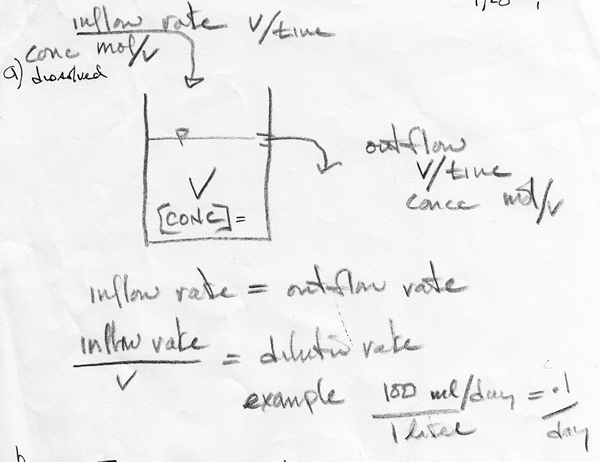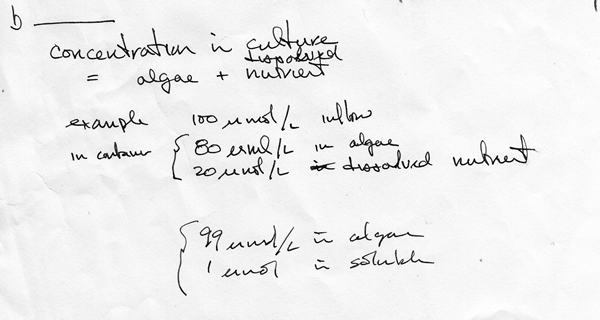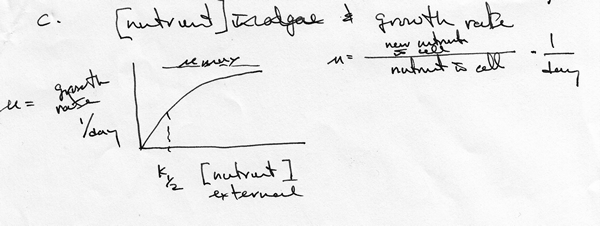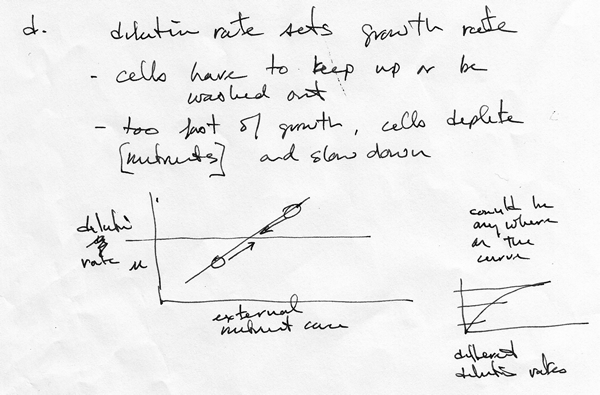The continuous culture apparatus, with the combination of growth rates, dilution rates and external nutrient concentration relationships will reach a steady state nutrient concentration and growth rate.
The growth rate will converge on the dilution rate as described above.
The nutrient concentration will adjust to support the growth rate needed to match the dilution rate in the following way.
if the growth rate of the algae is too fast, they take up extra nutrient from the culture, thereby depleting the external nutrient concentration and slowing the growth down
if the growth rate of the algae is too slow, the fresh medium that is diluting the culture comes in faster than the algae are growing and taking up the nutrients, thus the concentration in the vessel will rise
By setting different dilution rates, the culture will reach steady states at different combinations of algal growth rates and external nutrient concentrations (see the small figure at the bottom right of this panel).






